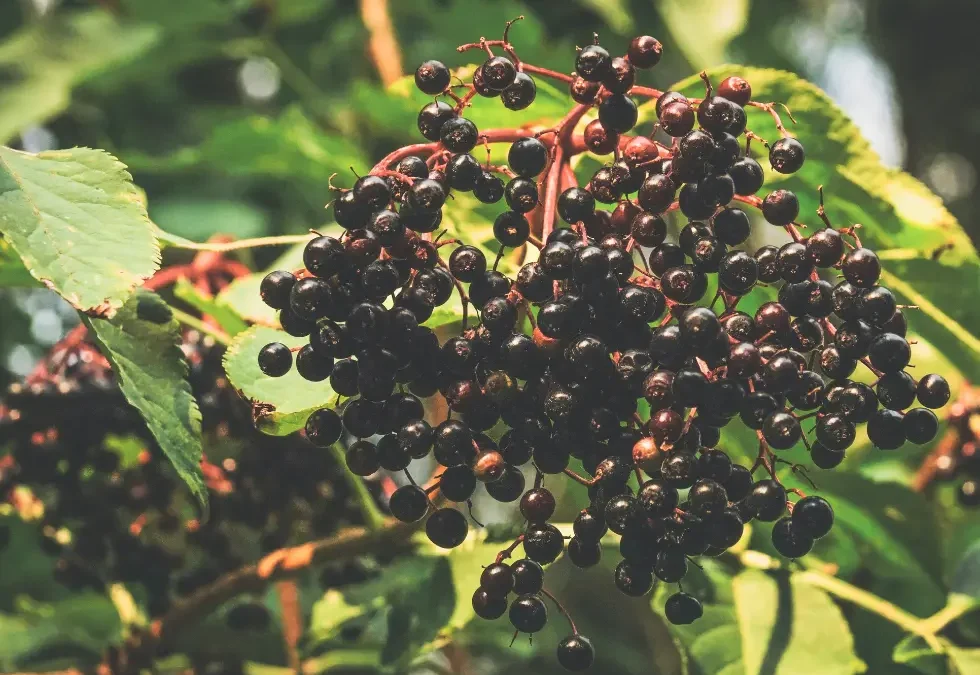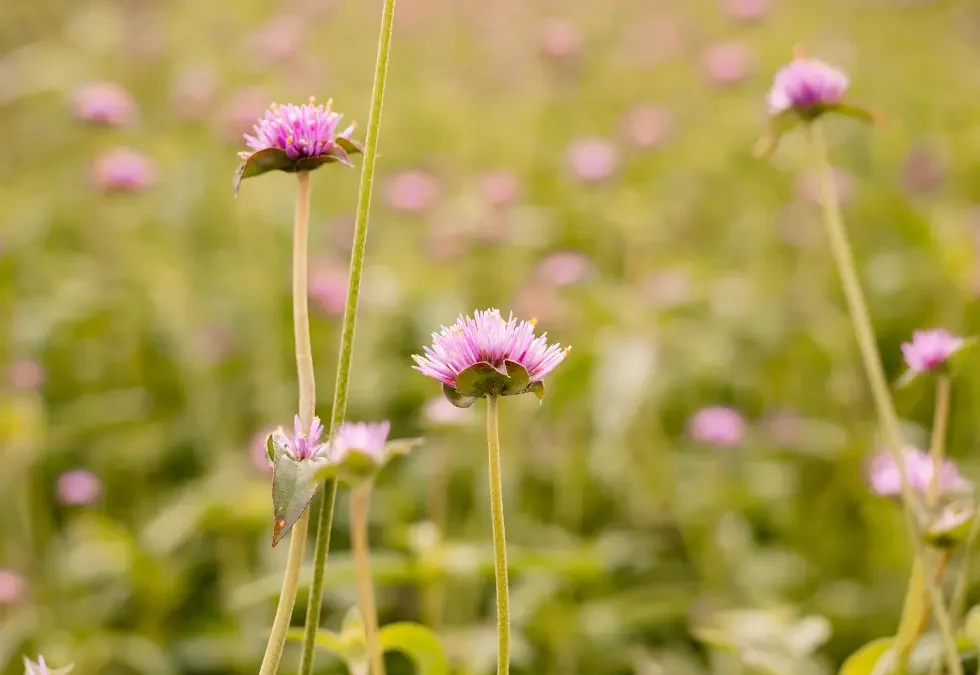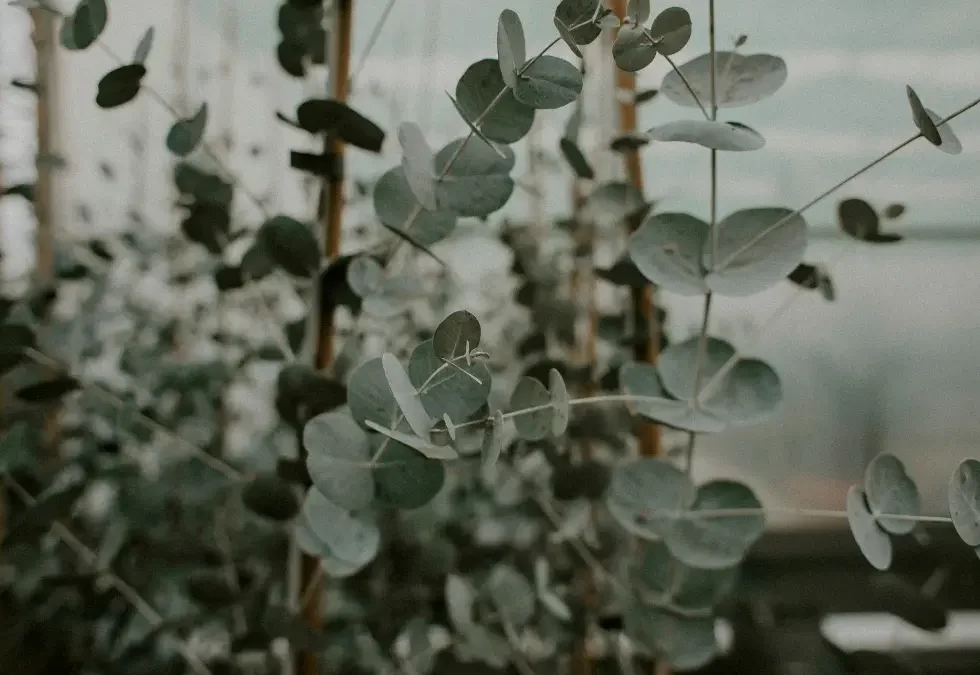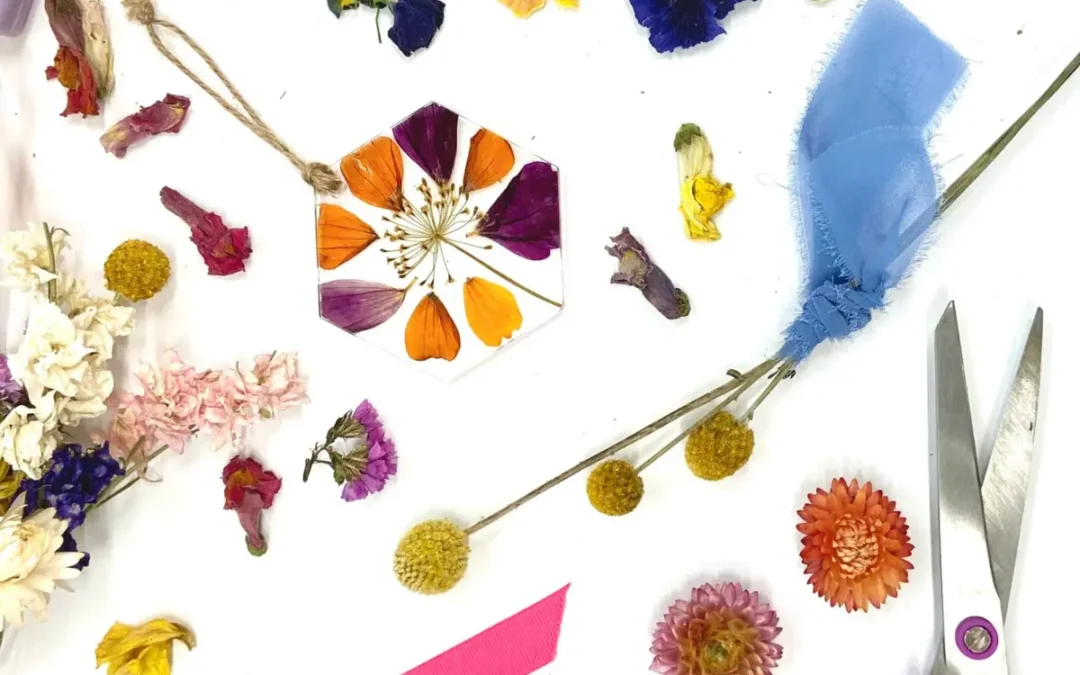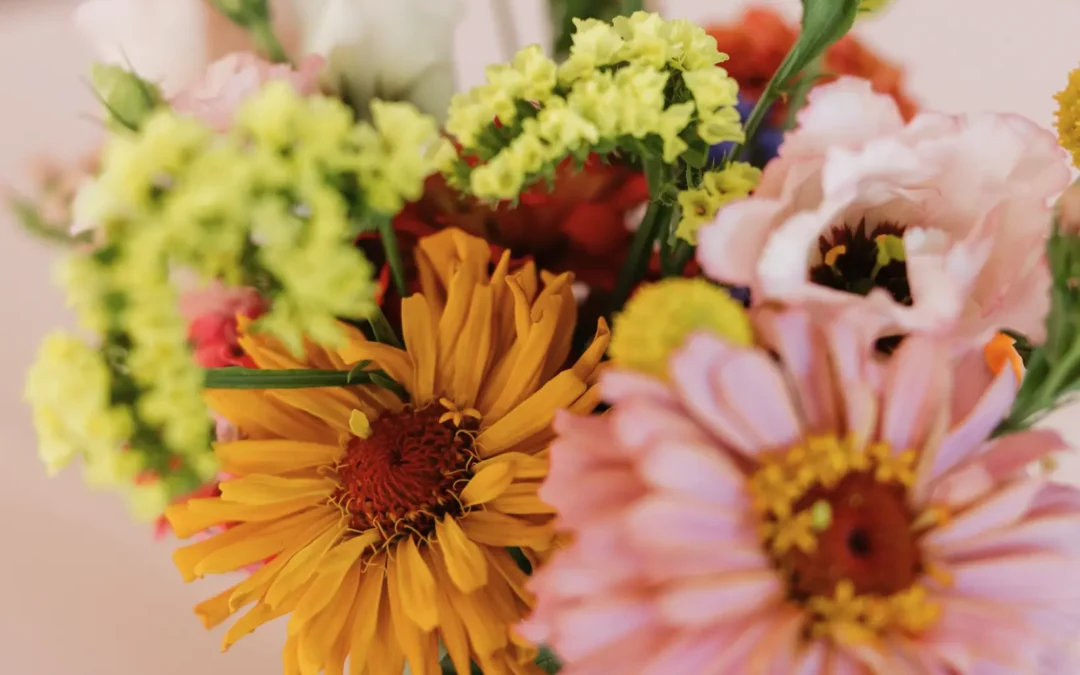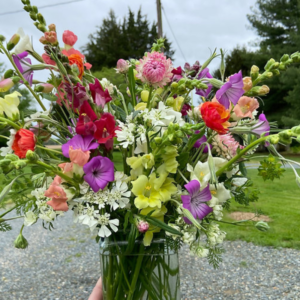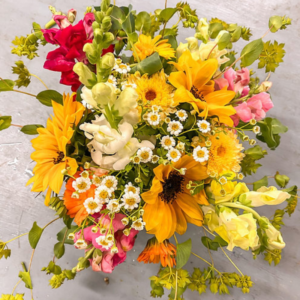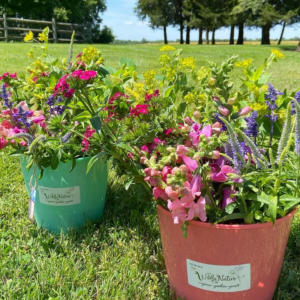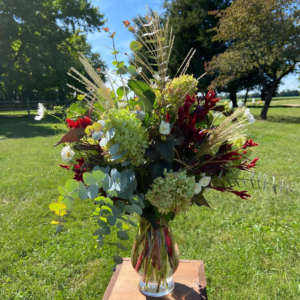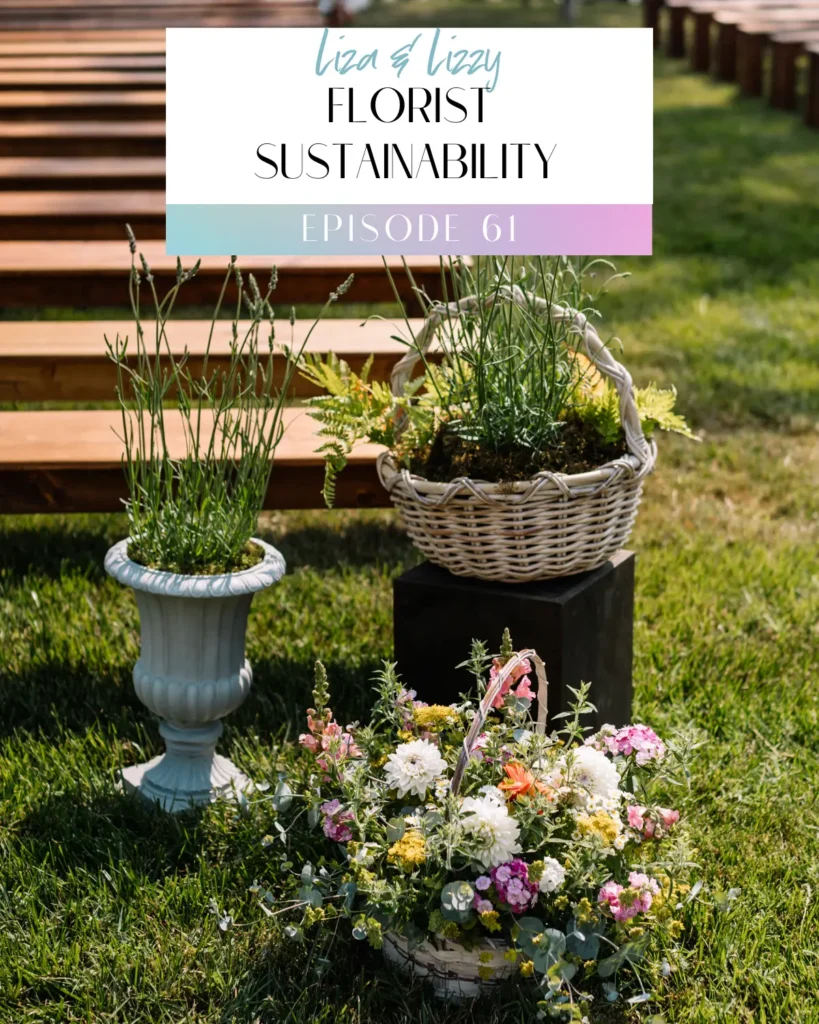
Beyond the Mason Jar
Sustainability in the floral industry isn’t just about reusing ribbon or swapping out a vase for a mason jar. In Episode 61 of The Flower Files, Liza Goetz strips back the layers of greenwashing and dives deep into the real, often uncomfortable truths of what it takes to be truly sustainable as a florist, designer, or grower.
If you’ve ever wondered what “eco-conscious” really means in floral design, or if you’ve felt uneasy about imported blooms, floral foam, or the plastic-filled aftermath of a wedding install—this one’s for you.
The Harsh Reality of Floral Imports
We often romanticize flowers—soft petals, fragrant blooms, and natural beauty—but the truth is far more complex.
- Most flowers in the U.S. are imported from Colombia, Ecuador, Kenya, and other countries with looser regulations around pesticide use.
- These flowers travel thousands of miles, wrapped in plastic, contributing heavily to carbon emissions and single-use waste.
- Why are they blemish-free and scentless? Pesticides and preservation for long-haul travel.
“Many of those flowers have traveled farther than most of us ever will.” – Liza Goetz
Foam, Plastics & Floral Waste
Let’s talk floral foam—that green squishy block beloved for its convenience. It doesn’t break down, and many traditional types are toxic.
Then there’s the zip tie obsession in wedding installs. Floral design setups often become one-time-use plastic bonanzas, especially around holidays like Valentine’s Day.
This isn’t about shaming designers—it’s about calling out a waste culture the industry has normalized.
Real Sustainability = Real Change
Sustainability isn’t an aesthetic—it’s a responsibility.
Here’s what actual sustainable floristry looks like:
✅ Source locally whenever possible—even if you start with 50%.
✅ Grow your own specialty blooms to fill in design gaps.
✅ Ditch the foam in favor of chicken wire, floral frogs, taped grids, or reusable “pillow” mechanics.
✅ Compost all stems and floral waste, and avoid plastic trash bags.
✅ Talk to your clients. Educate them about seasonal availability and sustainable alternatives.
✅ Design with intention, not excess.
The Floral Foam Experiment
One of the Wildly Native team members conducted a study using various mechanics:
- Control: Water & chicken wire
- Traditional floral foam
- Wool-based foam
- Sphagnum moss with water
- Super-absorbent gel foam (think: diaper filler)
The verdict? Several non-toxic options worked just as well—without the environmental harm. But the most important takeaway? Always test your mechanics to avoid stem blockage and wilting.
The Economic Shift: Why It Matters Now
With new tariffs on imported florals and rising awareness, the industry is at a tipping point:
- Canada offers fuel subsidies to greenhouses, making out-of-season imports cheaper than U.S.-grown blooms.
- Tariffs on flowers from Africa, Central America, and Europe are changing wholesale pricing—and consumer behavior.
The floral industry is following in the footsteps of organic produce. People are asking questions. Designers need to start answering.
It’s Time to Speak Up
Florists and designers: you are the experts. Use your voice to:
- Normalize native, seasonal blooms.
- Share your sustainable practices visibly.
- Show clients how elegance and ethics can coexist.
“Life isn’t about perfection—it’s about intention.”
The floral industry doesn’t need more excess. It needs more educators, more advocates, and more transparency. Because sustainability shouldn’t just be sexy—it should be standard.
Your Bloom Homework
Liza encourages you to:
- Share this episode with a florist, friend, or fellow grower.
- Tell your sustainable design story online.
- Try a new mechanic or local supplier this week.
- DM or tag Wildly Native on Instagram to share your sustainable win!

